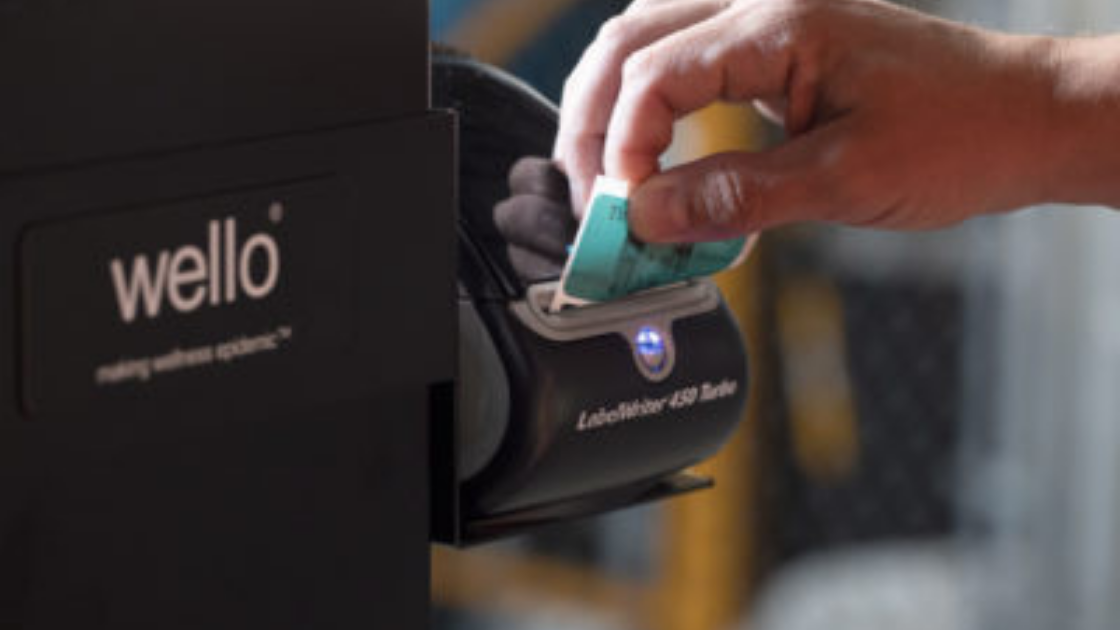Transitioning your team from manual temperature checks to automated screening might have a learning curve, but here’s how to make the switch simple.
As facilities look to improve infection control measures in the workplace to better protect the health of employees and end the spread of contagious illnesses, one strategy that should be implemented is evaluating current practices.
Guidelines and best practices for outbreak mitigation can change very quickly and it’s important that employee health policies adapt to reflect current best practices.
As just one example of how health protection strategies can change, many facilities have transitioned from manual health checks and temperature screenings into automated checkpoints that allow streamlined entry flow. If your facility is considering making the switch from manual to automation, here’s your step-by-step guide to transitioning.
Why automate?
First things first: if your team is on the fence about making the switch to an automated health screening system like welloStationX, there are a few important benefits to consider.
For instance, Jennifer Bradshaw, MSN, RN, with Amarillo-VA Health Care System, assisted her facility in implementing and carrying out screening processes when the Covid-19 pandemic first began. The health care system has 5 different facilities, including a 55-bed acute care unit, a more than 120-bed extended care nursing unit, and serves more than 25,000 veterans a year.
Because her facility needed 24/7 screening, they tried out many different temperature checking solutions, including tympanic and temperature sticks, but all were affected by weather. Additionally, manually screening everyone who entered the facility was very expensive and time-consuming for employees. This lead them to Wello to implement automated screening that, unlike needing an employee for, never needed a break, wouldn’t be called to another department, and could not be subject to user error.
Jeremy Cannon, VP-Chief Nursing Officer with Kalkaska Memorial in Michigan, also found that implementing a “global” approach to infection control measures through automated screening at the start of the pandemic helped protect the entire facility. Instead of implementing temperature screening within the long-term care unit of the hospital, as many other facilities did, their hospital elected to set up universal health checks and automated temperature screening with the welloStationX for all employees–not just those who worked in the long-term care facility.
Applying the strict screening process of long-term facilities on a broad scale made a difference: their census did not dip and they have not had one nosocomial infection in their long-term care patient community throughout the Covid-19 pandemic. “We were able to keep the people that entrusted us to keep them safe, safe,” Cannon notes.
Both Cannon and Bradshaw also quickly learned that while many facilities assumed outdoor screening before allowing entry would help mitigate and control infection spread, that strategy leaves out one critical factor that could interfere with accuracy: the weather.
For areas that can see temperature volatility, outdoor manual temperature checks may not be reliable. “We have really extreme temperatures in our area and we found that some of these methods were challenging for us to use,” Bradshaw notes.
She explains that her facility actually tried many different strategies of manual temperature collection, until they turned to automation with welloStationX.
“You couldn’t read them [other temperature checking solutions] and they caused people to have to get too close to others to actually get a reading,” Bradshaw points out, which was highly ineffective.
And like Bradshaw experienced, Cannon says his facility soon saw challenges due to extreme weather in Northern Michigan (“It probably snows more than sun shines here,” he quipps), as well as back-ups in employees entering the building as manual self-checks and screening questions were carried out. Automation solved both the problem of back-logs in processing and inaccurate or unsafe temperature readings in bad weather.
If your facility is considering making the switch–or if you’re ready to take the leap–here are the next steps you need to take.
Step 1: Create a custom plan for your facility
If your facility is ready to implement automated health screening, making the switch is simple: Wello can walk you through the process to determine which aspect of Wello’s software and platform is right for you.
There are many different ways that Wello can be utilized based on facility needs, including:
- Touchless temperature scanning
- Health questionnaire–use Wello’s or create your own
- Compliance reports
- Data logging
- Integrations with your door-lock system
- Color-coded printable clearance badges indicating status for visitors and/or employees
The exact set-up and parameters for your facility will be dependent on your needs and workflow, so it’s best to start by setting up a consultation with Wello to help you determine what is best for your facility, employee and visitors’ needs.
From there, Wello can help you set up the physical welloStationX as well as integrate software and employee training to put automation into action. Choosing automation that comes with training and technology support is crucial, because there will be a learning curve for both employees and, if applicable, facility visitors, as they enter into the building for screening.
However, once automation is implemented, the system can foster trust and demonstrate a facility-wide commitment to health and safety. “By using this technology, we can ensure that everyone that comes into the facility has checked all the same boxes that we would for our employees and [ensures] that everyone is well,” Cannon says. “It’s another safeguard.”
Step 2: Establish your facility’s health questionnaire
The first step in automation is to choose your facility’s health questionnaire process. There are two ways you can utilize the health questionnaire portion of Wello: you can allow employees to complete their custom or boilerplate Wello health questionnaire remotely or at the station.
You also have the option to not use the health questionnaire at all and solely utilize temperature scanning; however, if you do elect to use surveys, you have two options to choose from:
Option 1: Remote completion. Employees complete the health questionnaire (you can use Wello’s or create your own) on a mobile device through a secure Wello website. They can use their own device or one through the facility, but no downloading is required–the questionnaire can simply be completed through a custom or Wello website. This allows employees to complete the questionnaire at home, or before they enter the facility to streamline the process. Upon completion they will receive a QR-code on their phone that can then be scanned on the station to unlock the temperature screening.
Option 2: In-person completion. Employees complete the health questionnaire directly on the welloStationX, prior to taking a temperature screen.
Step 3: Set up the welloStationX for touchless temperature scanning
The next step in the automation process is for the employee to visit the physical welloStationX for touchless temperature scanning and logging. Some facilities may choose one central entrance to position the kiosk, while other facilities have invested in multiple stations: it all depends on size of facility, number of entrances, and number of people needing to scan. The best placement for the station to provide the most accurate readings is somewhere indoors, away from HVAC systems, and around adequate lighting.
Regardless of placement, the station is designed to be customizable and effective in a variety of settings and has been tested with different heights, including with wheelchair placement. However, it is important to note that the welloStationX is a precision instrument and certain people may require guidance on how to properly position in front of the station to ensure an accurate reading. To use the welloStationX, following successful passing of the questionnaire from a mobile phone, Wello provides the employee or visitor with a unique QR-code that will identify them in the system.
The individual then:
- Scans the QR-code at the station to inform the system the questionnaire has been completed
- WelloStationX performs a touchless temperature scan at forehead level
- Wello logs the temperature, along with the individual’s identifying information as a unique pin for privacy, into the system (this step is optional).
- An entry badge can be printed with the individual’s picture
- The individual proceeds into the building with the color-coded badge signifying clearance
Step 4: Program your parameters
One of the most important steps that must be taken is that the station needs to be programmed with clear parameters for acceptable temperature ranges. It can be programmed to only alert when that temperature range is exceeded.
Alerts are sent through a secure platform to appropriate administrative staff by email and identifying employee information is kept secure. Because Wello automates screening processes and allows facility leaders to set their own parameters, when the station detects a problem, it allows for early and private intervention immediately.
If the alarm is triggered, the facility has the opportunity to intervene and identify the next steps, all in a very secure way because the system can set pin numbers for employees.
As part of training with the automation, employees should also be educated upon implementation of the station on what the parameters are and what health checks are in place, so the symptoms that would be caught by the system are clear.
“There are no surprise questions here,” Cannon explains, as his facility has implemented standardized parameters that all employees are aware of.
Step 5: Outline next-step interventions
Next, it’s crucial that a process is identified for action steps when a temperature reading is high. Kalkaska Memorial, for instance, has the welloStationX programmed to immediately alert Employee Health as next-step intervention when an employee reading comes back high. An Employee Health nurse will come down to the scanning station to physically assess the employee and identify appropriate action to take.
Although the station’s temperatures are clinically proven to be accurate and do not require a second manual check, some facilities determine that additional assessment for other symptoms can be helpful in guiding the next step.
Outlining clear next-step interventions that will follow any concerns with automated screens can also foster a culture change within a facility. For instance, Cannon has found that within his healthcare facility, there had been an almost stoicism to coming into work sick–from nurses to doctors to healthcare aids, there was an underlying culture that you can “tough it out” and come to work sick.
But establishing health questionnaires, automated screening, and clear “next steps” has reinforced the message that health leaders want to encourage workers who are ill to stay home and recover, and has helped shift cultural work standards in employees. And that key culture shift not only leads to healthier employees, but a healthier workplace as well.
Step 6: Create a return-to-work policy
If further assessment by designated staff determines that the next appropriate step is to remove an individual from working at that time, the next step is to clearly identify what parameters must be in place for a return to work to happen.
For instance, Kalkaska Memorial also has employee check-in procedures to clear an individual before they can return to work. Once those procedures and parameters have been met and the individual has been cleared, they can return to work (and of course, must complete their health questionnaire and daily clearance again).
Automation that works
Facilities that have implemented Wello’s systems know that the automated temperature scans, health questionnaires and seamless processes are effective both now and with future health needs.
Whether it’s a pandemic or just a normal Tuesday, automated screening technology can help ensure a baseline strategy for facility employees and visitors to be prepared and protected, no matter what the day (or night) will hold.

